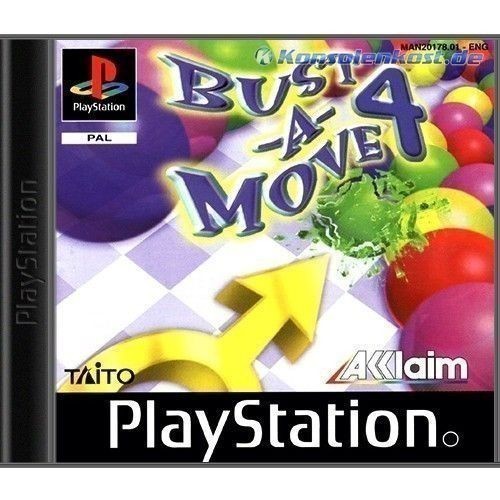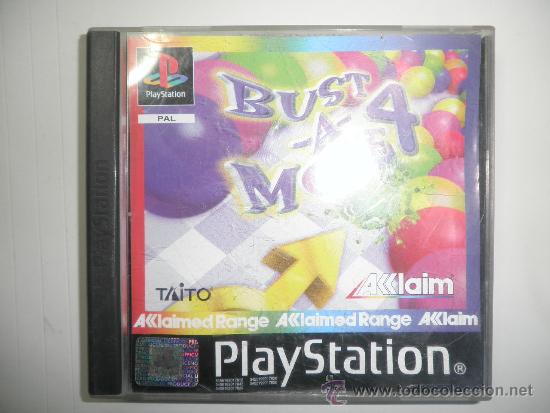

The sounds are also more noticeable and animated, and the Dreamcast controls are responsive and smooth, making for fewer frustrating "I didn't tell you to go there" moments. The colors and objects are bright and crisp to the extent that you feel as though you're playing an arcade game.

On a positive note, the high-res graphics and the improved sound and controls bump BAM 4 up a notch. This hurts the overall value of BAM 4 immensely. That's a tough one to figure out, as including a four-player mode - when possible - seems like an obvious feature for a puzzle game. But while the Dreamcast is the four-player system of choice these days, BAM 4 is one- or two-player only. The N64 BAM 99 three- and four-player mode really added a lot to the gameplay - just being able to take on more than one CPU or human opponent made the game significantly more worthwhile. What's surprisingly gone from the Dreamcast Bust-A-Move 4 is a four-player mode. The problem is, it's just as easy to construct a simple puzzle that brings bubbles smashing down in two moves as it is to build an extremely difficult puzzle by alternating colors and never grouping two together - which can be disappointing. The interface for constructing puzzles is basic and intuitive, and it is actually pretty fun to try to determine what makes for a good puzzle - easy or difficult. The screen can be adjusted for wide-screen or regular play, and you can save your puzzles to a memory card. You select from a handful of primary and secondary colors then throw in clear bubbles, stars, block bubbles, and so on. The edit mode doesn't really offer anything exceptional. Your success will be evaluated at the end, and you'll receive a letter score for how well you played in terms of strategy, speed, and technical skills. someone else" contest, and the challenge mode is a single-player match where you solve about 25 increasingly difficult puzzles in sequence. player, challenge, and edit modes are more of the same for the BAM series. In this challenge, you compete for the number of match wins, not necessarily for points. the CPU" without the theatrics - more arcade-like.

computer mode also features a win contest level, which is the standard "you vs. You must beat each character in one match to move on to the next, and if you're successful, you'll "collect all the scattered bubbles and bring light back to the world." The player vs. computer mode contains story levels in which you play against the CPU characters. Within this mode, there's an arcade challenge, in which you play increasingly difficult pulley-style levels a story section, which is essentially the same as the puzzle mode but displays a storyline element between each level and a collection challenge, which is a huge, endless stream of homemade puzzles you play in sequence. Puzzle mode is the arcade conversion of Bust-A-Move 3, in which a single player works through the levels without an opponent, neither human nor CPU.
BUST A MOVE 4 SERIES
If you haven't ever played the arcade-based series or haven't played it in a while, the latest BAM incarnation offers a bevy of puzzle collections, a pulley system, an edit mode, and one of those charmingly benign storylines that sends you off on puzzle challenges supposedly heightened by your newly found sense of purpose in having to win puzzle matches to bring back the stolen daylight. If you've played the Bust-A-Move 99 games, you'll find that this version is basically the same. The game hasn't adopted any stunningly new and original traits or features, and the much-needed four-player mode is mysteriously missing, but the high-res graphics and predictably amusing and addictive gameplay make Bust-A-Move 4 a decent puzzle game to own for your Dreamcast. Last year, Acclaim released Bust-A-Move 99 (technically Bust-A-Move 4) on the Nintendo 64 and the PlayStation - and now the Dreamcast version has rolled into town under the name Bust-A-Move 4.


 0 kommentar(er)
0 kommentar(er)
